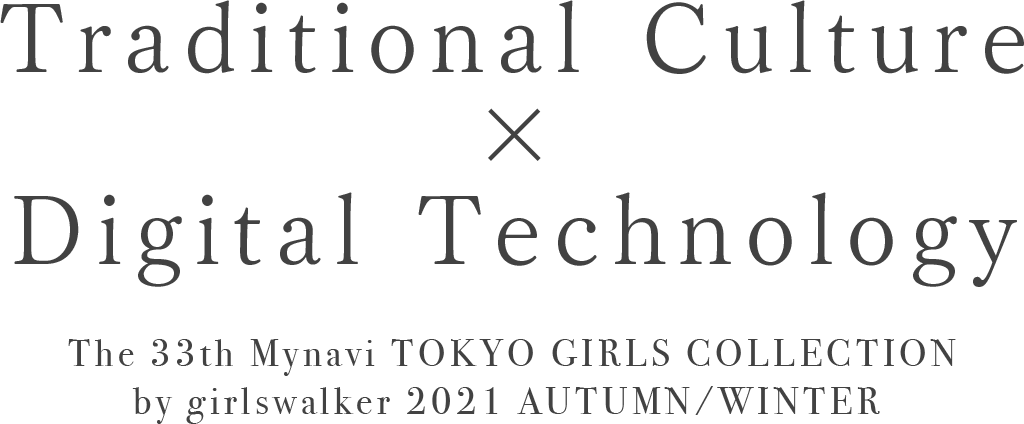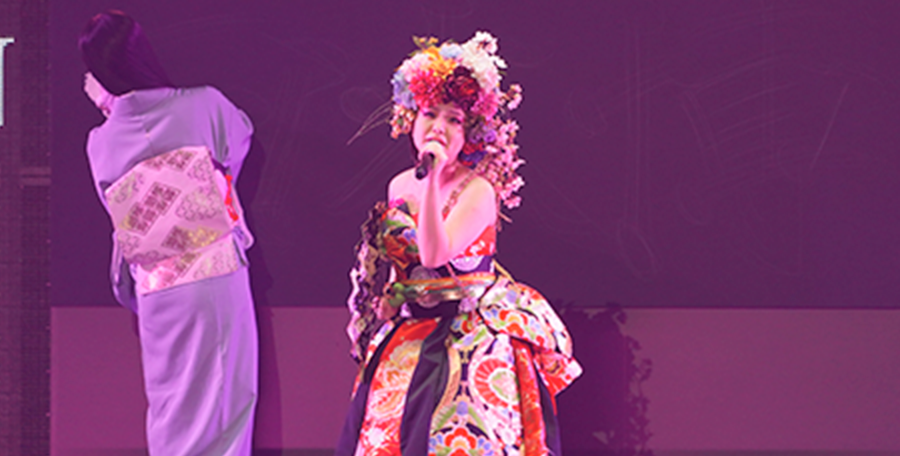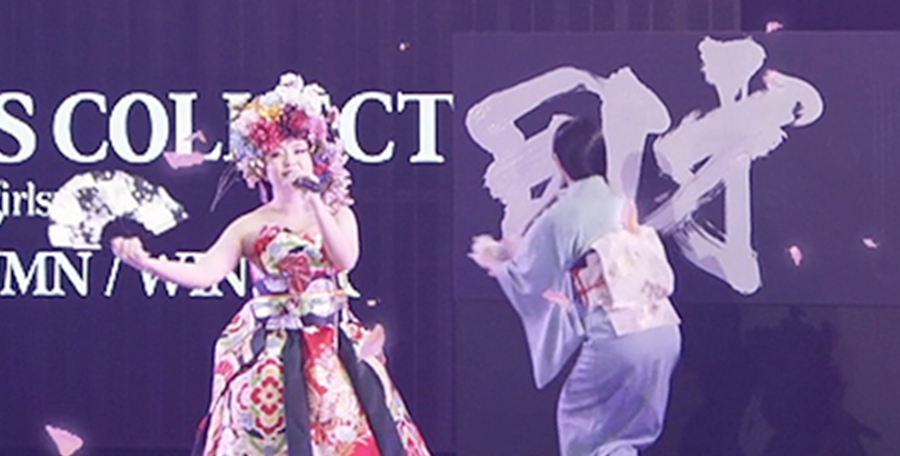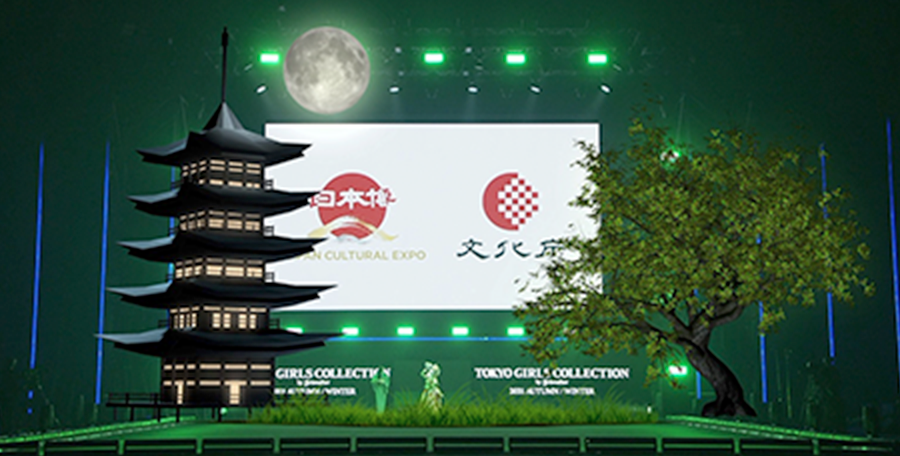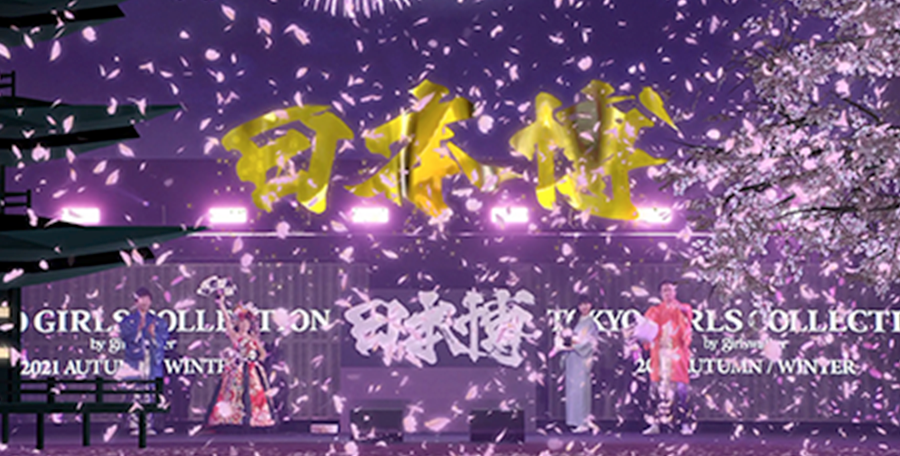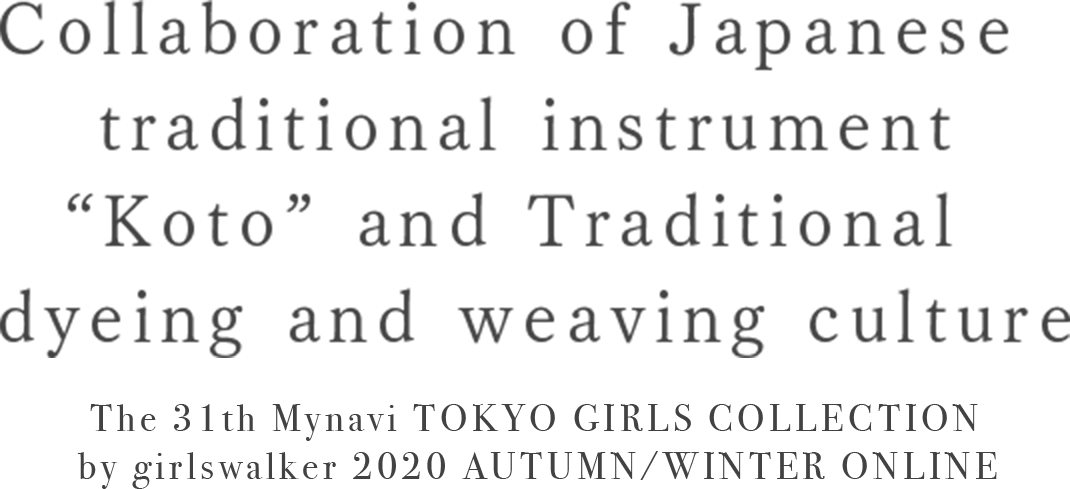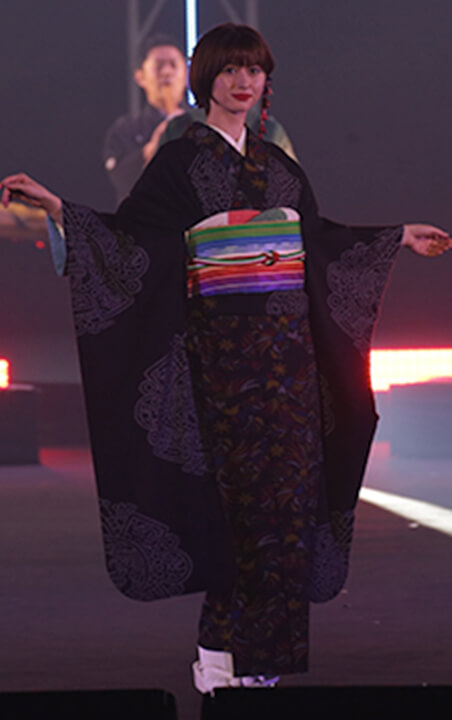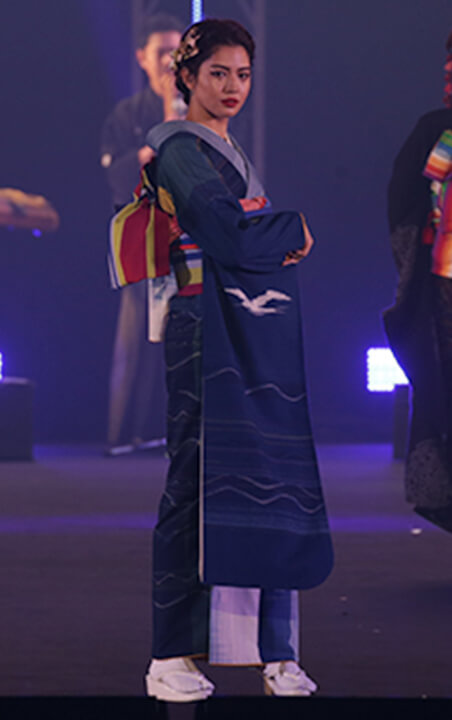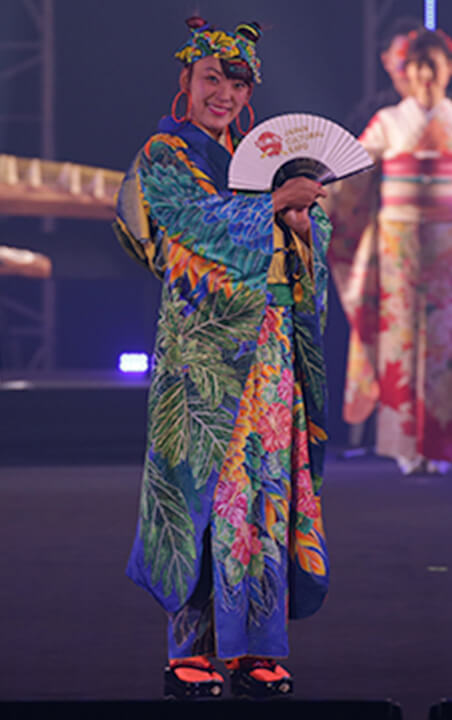“Japan Cultural Expo” by Agency for Cultural Affairs was adopted as a collaboration project of Japan’s largest fashion festival “TOKYO GIRLS COLLECTION” and cultural resources such as intangible folk cultural properties of each region.
In this project, we aim the new cultures be succeed and established by introducing the attraction of cultural resources such as intangible folk cultural properties for young people, arranged cultures in modern style, a succession for next generations, and make new contents by spreading information of cultural resources in and out of Japan.
A dense stage full of the charms of Japanese culture!
It is performed the collaboration between “Enka” which express the unique sensitivity of Japanese people, “Calligraphy” which has a long history and “XR” which is brand-new digital technology.In the scene of the four seasons of Japan expressed by XR, the Enka singer "Maya Sakura" sang "Yozakura Oshichi". At the same time, a splendid calligraphy performance by "Mami", a calligrapher who is known in Japan and abroad, was performed.In the middle of the stage, comedians "TIMON D" appeared in their familiar colored Hakama!At the end, the word "Nihon-Haku",which means "Japan Expo" in Japanese, written by the calligrapher Mami, appeared on the XR!Japanese culture and the latest technology were combined to create an energetic stage filled with Japanese culture.
-
- Enka
- It is an abbreviation for a speech song in which the criticism of the government was expressed during the movement for Civic Rights and Freedom in the Meiji era. It is one of the categories of songs familiar to Japanese people based on their unique sensibilities and sentimentality.
-
- Calligraphy
- Calligraphy developed in China, and was introduced to Japan around the 6th to 7th century, as a form of copying sutras along with Buddhism. Brushes, methods of making ink and paper were also introduced at the same time. Calligraphy became established as a part of Japanese culture.
-
- XR(Extended Reality)
- Digital technology is used to express things that do not exist on the actual stage. This time, it represented the changing seasons that are unique to Japan. In the middle of the stage, cherry blossom blizzards flew as the music rose. The stage was also livened up by the floating calligraphy on the stage.
Collaboration stage of Japanese traditional instrument and traditional dyeing and weaving culture tointroduce attraction of Japanese traditional culture!
With the performance of koto and shakuhachi, models walked appeared on the stage wearing colorful kimono from KIMONO project, with design of culture, history, nature of all over the world. These kimonos were dyed by the technique which is designated by nationally designated important intangible folk cultural property. The koto performance of “Kurenge” ,opening theme song of Kimetsu no Yaiba, by Suzuki brothers (Fuku, Yume, Tano, Homa) was stunning.
After the performance, they enjoyed talking about Japan Cultural Expo(Nihon-Haku) and Japanese traditional culture.
-
- Furisode (Long sleeved kimono): Kurume-gasuri (Nationally designated important intangible cultural property)
- Kasuri is made in Kurume-shi and near Kurume-shi (old Kurume Domain Area) ,Fukuoka.vKasuri is cotton fabric which is mainly dyeing with indigo plants. The pattern of Kasuri is made by weaving indigo and white Kasuri thread.
-
- Obi (Kimono belt):Miyako-Jofu Cloth (Nationally designated important intangible cultural property)
- Miyako-Jofu Cloth is one of hemp fabric which is made in Miyako-shi, Okinawa. Miyajo-Jofu cloth is top quality product and it take more than 2months to weave one-tenth hectare of the cloth. It is called “Echigo of East, Miyako of West”.
“Heavenly maiden style” Yukipoyo collaborate with traditional culture of Shizuoka
The collaboration stage of “Sanja Sairei Bayashi” and “TGC SHIZUOKA”. Yukipoyo dressed up with the kimono which was produced by herself. The kimono was arranged in a heavenly maiden style.
Society of Sanja Sairei Bayashi and the 32 students from Shizuoka prefectural Yokosuka High School studying fold entertainment performed traditional “obayashi” and “Hyottoko-Okame dance”. Yukipoyo showed gorgeous walking with a live performance of “Sanja Sairei Bayashi” which is assigned as a Shizuoka’s first designated important intangible cultural property.
- 【What is “Sanja Sairei Bayashi”?】
-
During the festival, Sanja Sairei Bayashi shows exciting performance above the Neri. During Kyoho year in Edo period, Nishio Okinomori Tadanao, the master of Yokosuka Castle, have started to wish for participation shift. Gokenin of Nishio Okinomori Tadanao learned the original form and the original tone of Yokosuka was added and changed to the current style of Sanja Sairei Bayashi.
There are three programs for Dochu-bayashi sucha as Oma, Yatashita, Bakabayashi and three programs for Yaku-Daiko such as Shoten, Kamakura, Shico-me.
Performers use 2 small drums, 1 big drum, 1 surikane and 2 shinobue. In addition, there are Tekomai with the mask of Hyottoko and Okame. Sanja Sairei Bayashi have long history and it’s performance is unprecedented. In 1955, it was assigned as Shizuoka’s first designated important intangible cultural property.
Discover new attraction of Kokura Gion Daiko!
The collaboration stage of “Kokura Gion Daiko” and “TGC KITAKYUSHU”. With the live performance of Kokura Gion Daiko, which has a history of 400 years and nationally designated important intangible cultural property, we enforced the special fashion show of original kimono made by KIMONO project. The theme of kimono’s design is the culture, history, and nature of countries all over the world. With the exciting drum performance, models dressed up with beautiful clothes walked the runway bravely and amazed the audience.
- 【What is “Kokura Gion Daiko”?】
- Kokura Gion Daiko is Gion festival which has a history of 400 years and nationally designated important intangible cultural property. Hosokawa Tadaoki, who construct Kokura Castle, have started this in 1617 to pray safety, good health, and prosperity of castle town. This festival imitates Gion festival in Kyoto. In Edo period, the “Mawari-Gion” which is the festival celebrating the transfer of shintai in Yasaka Shrine was the main format of this festival. People in town performed Japanese flute, drums, gong, Dashi, Kasaboko, Odori-yamasha and Ningyo-Kazari-yama. Through Meiji and Taisho period, the shape of Dashi has changed to current style which carries drums in front and back. This drum performed while walking and it can beat both sides of the drum. This is unique feature compare to other drums. The collaboration of drums, Jangara, and children pulling Dashi makes wonderful sounds of Kokura Gion Daiko.
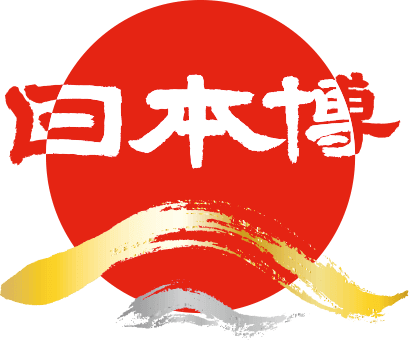
-

- With the theme of “Japanese and Nature”, Such as Art and Cultural property, Performance Art, Media Art, Culture of lifestyle/Literary arts/Music, Culture of food/nature, Design/Fashion, Symbiotic society/Multicultural symbiotic, restoration of disaster areas,“Japan Cultural Expo” is the project which aim to create the future by spreading the “History of Japanese Beauty” to all over the world and covey it to young people



